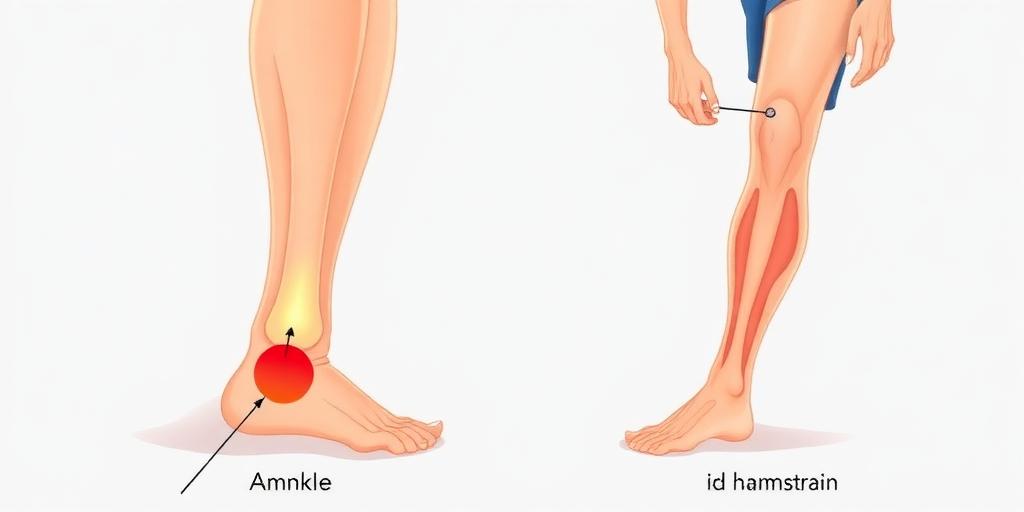Understanding Ligament Sprains vs. Muscle Strains
Ligament sprains and muscle strains are common injuries, especially among athletes and active individuals. While both involve damage to soft tissues, they affect different structures and have distinct characteristics. This article provides a clear understanding of ligament sprains versus muscle strains, their causes, symptoms, treatment, and prevention.
What is a Ligament Sprain?
A ligament sprain occurs when ligaments—the strong, fibrous tissues connecting bones to each other—are stretched or torn. Sprains commonly affect joints like the ankle, knee, wrist, and fingers.
Causes:
- Sudden impact or twisting
- Falls
- Direct blows to the joint
- Overextension of the joint
Symptoms:
- Pain around the joint
- Swelling
- Bruising
- Limited range of motion
- Hearing or feeling a pop at the time of injury
- Difficulty bearing weight (especially in the ankle or knee)
Severity (Graded I-III):
- Grade I: Mild stretching of the ligament with minimal tearing.
- Grade II: Partial tear of the ligament with moderate pain and swelling.
- Grade III: Complete tear of the ligament, resulting in significant pain, instability, and loss of function.
What is a Muscle Strain?
A muscle strain, also known as a pulled muscle, involves damage to muscle fibers or the tendons that attach muscles to bones. Strains often occur in the lower back, hamstring, groin, and calf.
Causes:
- Overstretching or overuse of a muscle
- Sudden contraction of a muscle
- Poor flexibility
- Inadequate warm-up before exercise
- Muscle fatigue
Symptoms:
- Muscle pain and soreness
- Muscle spasms
- Stiffness
- Weakness in the affected muscle
- Swelling
- Bruising
Severity (Graded I-III):
- Grade I: Mild stretch or tear of muscle fibers.
- Grade II: Moderate tearing of muscle fibers, resulting in pain and weakness.
- Grade III: Complete rupture of the muscle or tendon, causing severe pain and loss of function.
Key Differences Summarized
| Feature | Ligament Sprain | Muscle Strain | | :---------------- | :---------------------------------- | :----------------------------------- | | Tissue Affected | Ligaments (connects bone to bone) | Muscles or Tendons (muscle to bone) | | Common Locations | Ankle, knee, wrist, fingers | Back, hamstring, groin, calf | | Primary Causes | Twisting, impact, falls | Overuse, overstretching, fatigue | | Common Symptoms | Joint pain, swelling, instability | Muscle pain, spasms, weakness |
Treatment Approaches
The initial treatment for both sprains and strains typically involves the R.I.C.E. protocol:
- Rest: Avoid using the injured area.
- Ice: Apply ice packs for 15-20 minutes every 2-3 hours.
- Compression: Use a bandage to reduce swelling.
- Elevation: Keep the injured area elevated above the heart.
Additional treatments may include:
- Pain Medication: Over-the-counter pain relievers like ibuprofen or acetaminophen can help manage pain and inflammation.
- Physical Therapy: Exercises to restore strength, flexibility, and range of motion.
- Supportive Devices: Braces or splints to stabilize the joint or muscle.
- Surgery: In severe cases (Grade III sprains or strains), surgical repair may be necessary.
Prevention Strategies
- Warm-Up: Prepare muscles and joints with adequate warm-up exercises before physical activity.
- Stretching: Improve flexibility by regularly stretching muscles and joints.
- Proper Technique: Use correct form and technique during sports and exercises.
- Strengthening Exercises: Build strength in muscles surrounding joints to provide support.
- Appropriate Footwear: Wear supportive shoes that fit well.
- Avoid Overexertion: Gradually increase the intensity and duration of physical activities.
Conclusion
Understanding the differences between ligament sprains and muscle strains is crucial for proper diagnosis and treatment. While both injuries can cause pain and limit function, knowing the specific tissue involved helps guide appropriate management and prevention strategies. If you suspect you have a sprain or strain, seek medical advice for an accurate diagnosis and personalized treatment plan.









